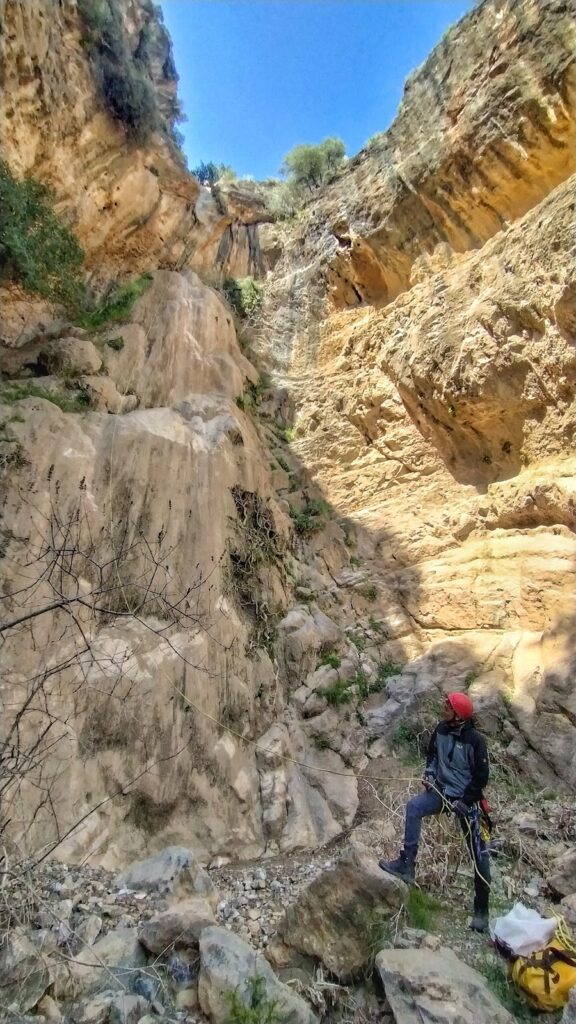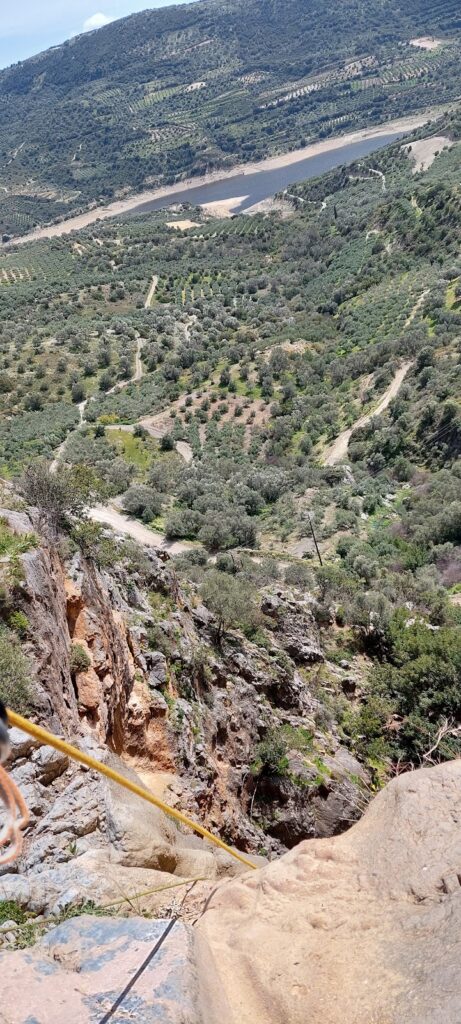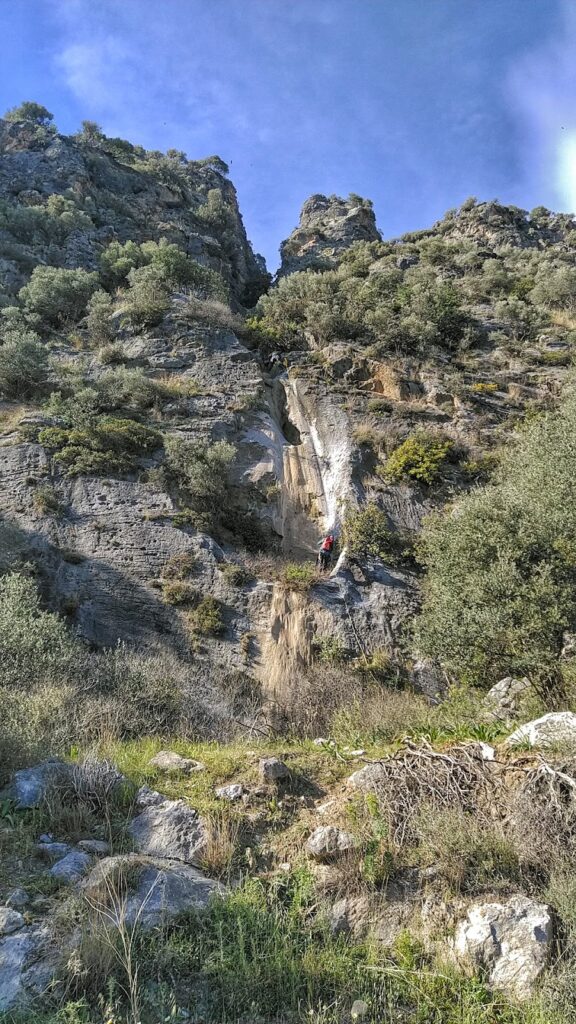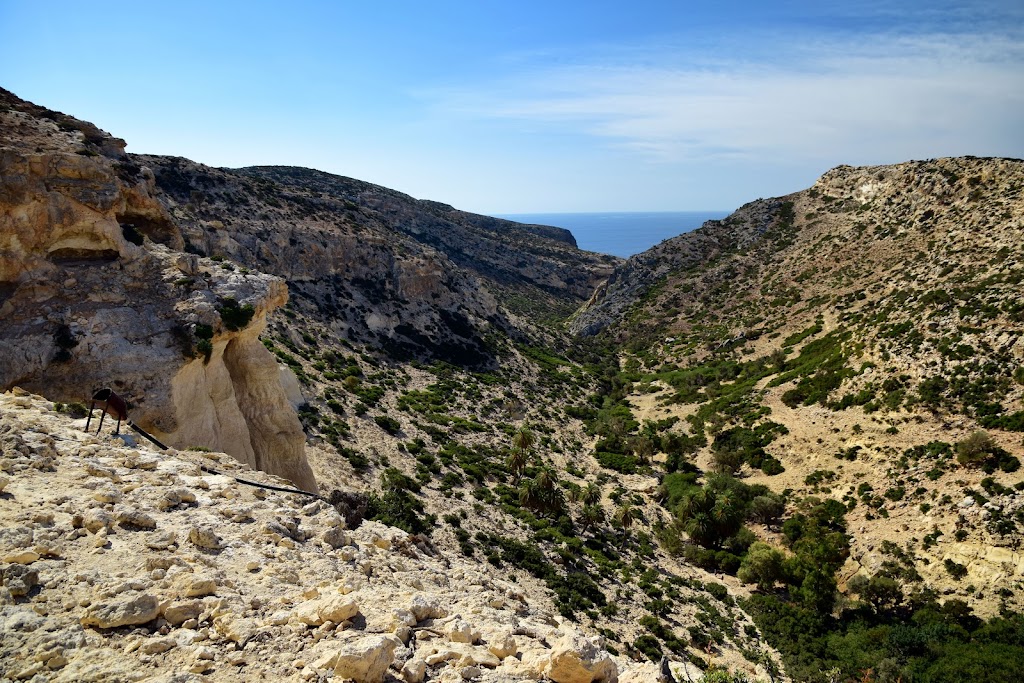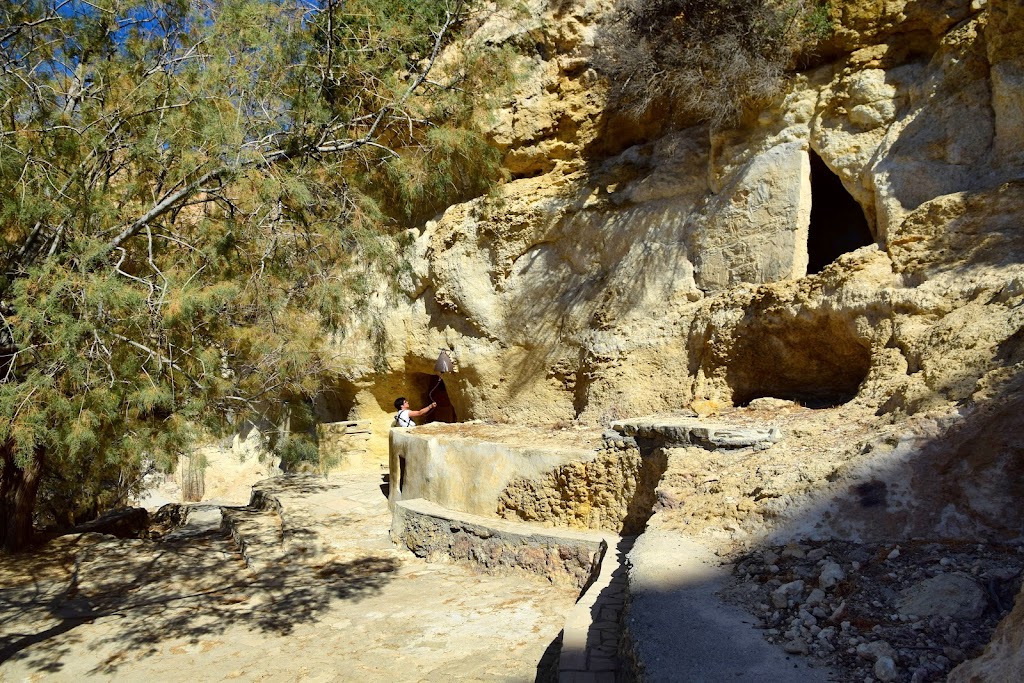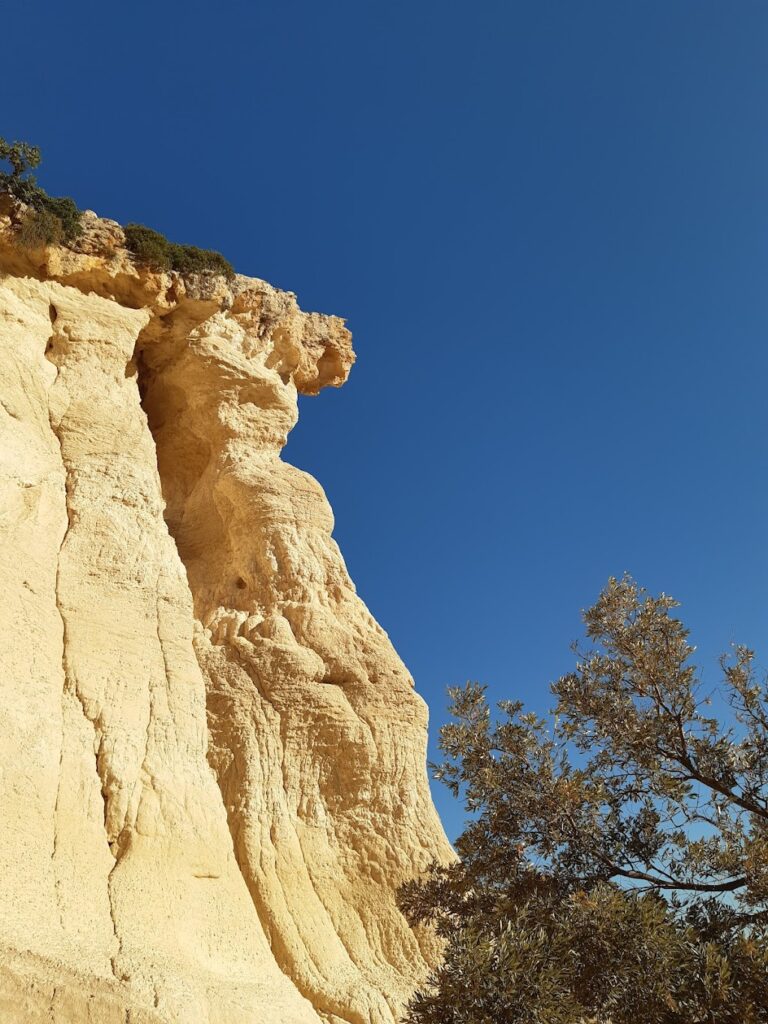Gorges to hike and walk near Kamilári, in Heraklion region
List of Gorges near Kamilári
- 10.5 km
- Apolychnos Gorge
- 3 km
The Apolychnos Gorge, situated just a few kilometers north of the town of Mires, is nestled in an area abundant with olive groves. This gorge is essentially a narrow valley that traces the path of a river, which in certain areas deepens and is surrounded by thick vegetation. The Tourki stream that flows through it carries water from a valley that begins west of Makres village to the Geropotamos river. The gorge, which is roughly 3 km long, begins near the village of Panagia and concludes at the traditional settlement of Agios Antonios (Vrelis). It’s conveniently accessible, particularly near its exit close to Agios Antonios, as it’s adjacent to the main road from Mires.
The gorge is named after the deserted village of Apolychnos, which is situated within the gorge at an elevation of 220m. This village, enveloped by verdant trees and bubbling springs, is home to the stunning Byzantine church of Saint Panteleimon, located in the village square.

- 10.9 km
- Rizopetro Gorge
On the southeastern flank of Mount Sanida, near the quaint village of Skourvoula, you’ll find a petite yet wildly untamed chasm known as Rizopetro. This gorge culminates in a striking 60m waterfall that cascades into the lake of the Faneromeni dam, a sight to behold especially after heavy downpours.
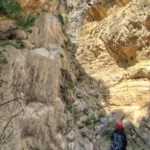
- 11.0 km
- Martsalo Gorge
- 2 km
- 1 h
- Hiking
The Martsalo Gorge, stretching around 2km, is nestled on the southern coast of the rugged Asterousia Range. It collects rainwater from the Aginara region, near the Panagia Odigitria Monastery and eventually flows out onto Martsalo beach. Initially, a well-kept short trail leads from the closest dirt road to the historic church of Panagia Martsaliani. This ancient church, dating back to the early Christian era, is believed to have served as a catacomb, providing refuge for the first Christians. Surrounding the church, one can find hermit cells carved into the rocks and remnants of old structures.
From this point, it’s a relatively easy descent into the gorge’s bed, leading to the picturesque Martsalo beach. According to local lore, the Apostle Paul briefly landed here during his journey to Rome. The path to the beach is dotted with clusters of Cretan date palm trees, forming the second largest colony in Asterousia, only surpassed by the palm forest of Agios Nikitas.
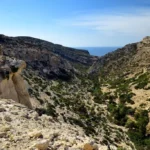
- 11.2 km
- Agiofarago Gorge
- 1.5 km
- 0.5 h
- Hiking
The Agiofarago Gorge, situated to the south of the Panagia Odigitria Monastery, was formed near two stream beds. One stream originates from the north-northeast of Gyalomonochoro, while the other begins west of Pigaidakia village. These two streams converge near Saint Kiriaki’s chapel, and after a fairly gentle course, they form the main Agiofarago Gorge that terminates at the stunning Agiofarago beach. The gorge features vertical cliffs with caves, but the path along the flat stream bed is quite easy to traverse. Just before reaching the sea, there’s a climbing field where climbers are often spotted.
Agiofarago, meaning Gorge of Saints, is named after the hermits who established a significant hermitage in Central Crete during the early Christian era, following Saint Paul’s visit to the region. As per a legend, around 300 hermits lived here in complete solitude, only gathering once a year in the Cave Goumenospilios to count their numbers and see who had died in the past year. The church of Saint Anthony (Agios Antonios), encountered on the way to the cave Goumenospilios, became the hub of the area’s asceticism when the hermits began forming a religious community. The church, believed to have been renovated three times, initially started as a small church in a rock cave. As the hermit population grew, the church was expanded. The final renovation is thought to have occurred in the 14th or 15th century. A small well outside the church supplied the hermits with water as there was no nearby spring. A circular Minoan tomb on a small hill south of the church indicates human presence from the Minoan era.
You can reach Agiofarago in several ways. You can take a boat from the ports of Kokkinos Pirgos, Agia Galini, or Kali Limenes, or you can take a dirt road starting from the historic Monastery of Odigitria near Sivas, which the area is a part of. From the monastery, follow the signs to Agiofarago, descend into the gorge, and continue until you reach a dead-end and a small parking area. Be cautious not to park your car under the trees as goats might climb on the roof to eat the leaves, causing damage. The hike from the parking area to the sea through the gorge takes approximately 25-35 minutes.
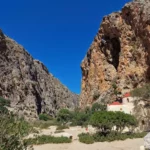
No results available
ResetGorges in other nearby areas
No results available
Reset




